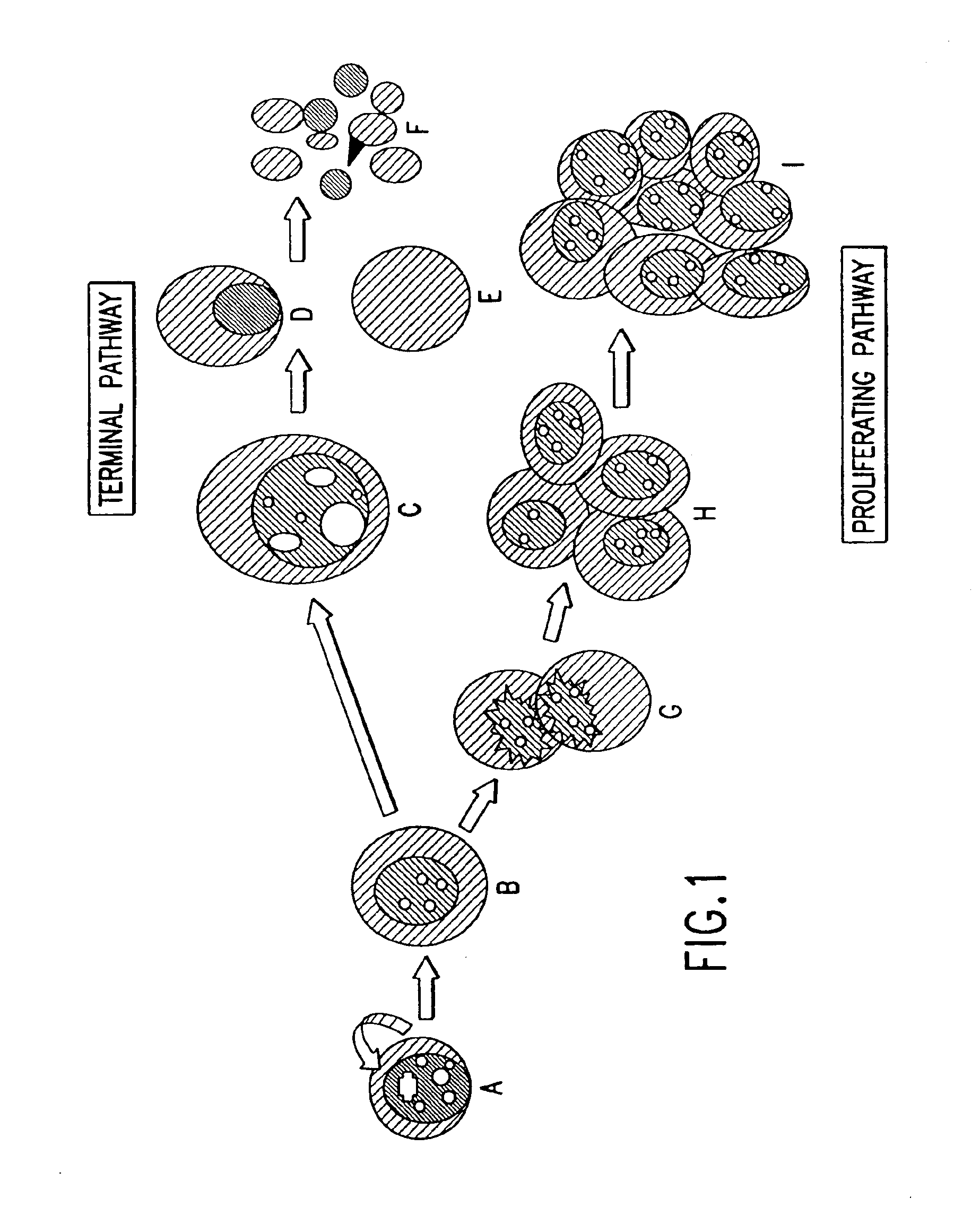Class characterization of circulating cancer cells isolated from body fluids and methods of use
- Summary
- Abstract
- Description
- Claims
- Application Information
AI Technical Summary
Benefits of technology
Problems solved by technology
Method used
Image
Examples
example 1
[0126]Cancer Cell Isolation Methodology and Idendfication
[0127]This example illustrates the cancer cell isolation methodology and identification of micrometastasis and other circulating cancer cell populations in prostate blood samples of patients diagnosed with prostate cancer.
[0128]With informed consent, 10-20 ml of blood was drawn from the antecubital veins of control subjects and patients with prostate and breast cancer into Vacutainer tubes (Becton Dickinson; Franklin Lakes, N.J.) containing acid citrate dextrose (ACD) solution A as an anticoagulant. The samples were processed at room temperature via the isolation procedure described below within 24-hour hours, including the transport time. All protocols and consent forms were IRB (Institutional Review Board) by collaborating institutions.
Double Density Gradient Centrifugation (Prostate)
[0129]About 10 to 20 ml of blood were diluted to 30 ml with PBS at room temperature in a 50 ml polypropylene tube. Tubes were c...
example 2
Morphological Analyses of Circulating Cancer Cells
[0140]This example shows the data for the neoplastic developmental pathway. The identification of cell types of circulating cancer cells for characterization is based upon cytological analysis to assess whether the cells are terminal or proliferative. The role of these isolated cells in the formation of circulating microtumors and resultant metastases is also of interest.
[0141]Cancer cells from 18 breast cancer patients were isolated according to the methodology set forth in Example 1. Based on the dynamic neoplastic developmental pathway, the cells were imaged and viewed using a computerized fluorescent microscope to determine the cell types are set forth in FIGS. 1A-1IFIGS. 2A-2S are monochrome images of the cell types depicted in FIGS. 1A-1I. FIGS. 2 through 1I depict monochrome images of cellular cytokeratin staining (“CK”) (CAM 5.2 labeled with FITC), thymnidylate synthetase staining (TS monoclonal antibody conjugated to FITC), ...
example 3
[0146]Determination of Aneuploidy via DNA Quantification Method
[0147]This example illustrates a method to measure the nuclear DNA content in single cancer cells in comparison to white blood cells found within the same sample as a measure of aneuploidy. The fluorochrome, 4′,6-diamidino-2-phenylindole (DAPI), binds to DNA with high specificity and the complex exhibits intense fluorescence (IFI—Integrated Fluorescent Intensity or # of pixels (area) multiplied by average fluorescence / pixel (density 1 μm)). This has permitted the measurement of DNA in nuclei and viral particles (Rao, JY et al, Cancer Epidemiology, Biomarkers &Prevention, 7: 1027-1033 (1998)), and in breast cancer cells (Coleman, AW, et al, J. Histochem.&Cytochem. 29: 959-968 (1981)).
[0148]The basis for the quantitative fluorescence image assay is a comparison of the DNA content of a reference cell, white blood cells (WBC) in this case, with the circulating epithelial cells (CEC) in question. Circulating WBCs are usually ...
PUM
 Login to View More
Login to View More Abstract
Description
Claims
Application Information
 Login to View More
Login to View More - R&D
- Intellectual Property
- Life Sciences
- Materials
- Tech Scout
- Unparalleled Data Quality
- Higher Quality Content
- 60% Fewer Hallucinations
Browse by: Latest US Patents, China's latest patents, Technical Efficacy Thesaurus, Application Domain, Technology Topic, Popular Technical Reports.
© 2025 PatSnap. All rights reserved.Legal|Privacy policy|Modern Slavery Act Transparency Statement|Sitemap|About US| Contact US: help@patsnap.com



